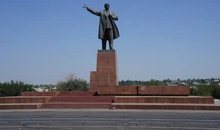
 Flash News
Flash News
Online fraud scheme discovered, AKSK appeals to citizens: how to protect yourself
Imam Ahmed Kalaja faces up to 3 years in prison, accused of obstruction of justice
Pyrotechnics near the Polytechnic University, police seize materials and launch investigations
Shots in Allias, the 31-year-old is shot by the neighbor, the perpetrator disappears after the incident
Posta e mëngjesit/ Me 2 rreshta: Çfarë pati rëndësi dje në Shqipëri
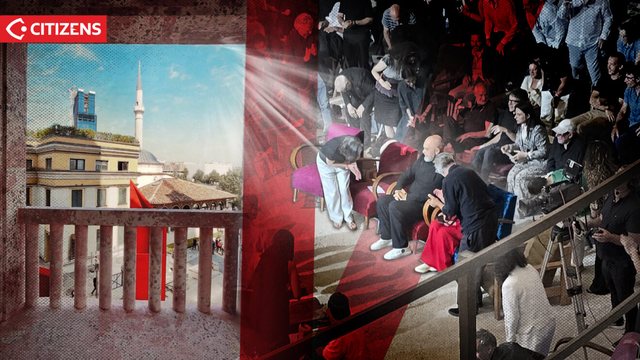
On a day that commemorates sacrifice, in a square that belongs to history, a tower was erected that has nothing to do with God or the city.
On June 6, 2025, on Eid al-Adha, Edi Rama did not sacrifice a ram. He sacrificed another piece of Tirana. With the glory and spectacle of the diverse colors of the carpets, he inaugurated one of Tirana's most contested towers.
Nestled behind the Clock Tower and adjacent to the Et'hem Bey Mosque, in the heart of the city's historic area, that tower is not simply an urban intervention.
Its pentagonal shape is no coincidence. Like the American Pentagon itself, a symbol of command and absolute power, this tower rises as a sign of architecture that does not house people, but carries a coded message: a new rite of sacrifice, a new ideology.
Where once a son was sacrificed for a divine vision, today the city is sacrificed for a personal vision.
This tower, which has defied law and morality, erected on the ashes of Bar Sahat – warned and denounced five years ago – is designed like a giant washing machine: a concrete machine for recycling black money and washing away state sins with aesthetic paint and architectural forms.
The prime minister's opening speech was a veritable theatrical act. With poetry, metaphors loaded with folklore, references to Abraham and "free minds not stifled by regulations," he launched a spectacle where architecture became an alibi, and art a pretext for domination, where the only spectators were his deputies: the architects.
It was not just a speech, but a script to legitimize a system. A beautifully packaged deception for the eyes of the army (as he called them) of 150 invited foreign architects, who, like obedient deputies, applauded – not out of the greatness of the idea, but out of gratitude to the one who provides them with the checks and the “cheapest land in Europe” to build without asking anyone: “incredibly free from the comfort of regulations that do not suffocate” (cit.).
In the name of imagination and architectural dreams, with guaranteed investors who have no demands other than to build quickly, with only one general idea, and with projects where over 1 million euros are paid for the design alone, Albania was presented as the place where dreams come true - not the dreams of citizens, but of those who want to launder money and paint crime with the colors of art.
Like any washing machine that needs air freshener, this new urban washing machine needs architects to give its aesthetic approval. They were presented as an army of visionaries, but in essence they are collaborators in a power machine that uses architecture to produce collective amnesia.
Rama, transformed from painter to architect, from prime minister to "host-man", perhaps for a few minutes he even believed what he said.
But for the foreigners who hang around, the fact that the mayor of Tirana is currently in prison for corruption is just a detail – as long as the spectacle continues, permits continue to be approved without a hitch, and $1 million checks are filled out with precision.
For those of us who live here, models, 3Ds, and animations are like the smoke from burning garbage – waiting for the incinerators that never come, and with our eyes on SPAK: who's next after Erion?
Because we know that behind those names and projects are hidden illegal permits, interventions on monuments, on historical areas, on protected areas, on mountains and forests, on the coast, rivers and lakes.
Behind the one-day splendor of "star architects" lies the eviction of people from their homes, and an economy that survives not on development, but on laundering money made dirty by crime and corruption.
The local architects, stunned by the Prime Minister's poetry, perhaps emerged from the hall inspired – with that false complacency that "architecture transforms not only space, but also minds" or perhaps like obedient soldiers – lined up shoulder to shoulder with the foreigners, before their leader, to whom they have given the power of Chief Architect.
They came together on the day of sacrifice – not to build more just, more sustainable, more humane cities – but to carry out a much simpler mission: To wash away sin with style and legitimize crime with design.
Therefore, the pentagonal tower where this "vision" was presented is not a formal coincidence, but rather it embodies the geometric shape of a new order - where sacrifice is no longer an act of faith, but a propaganda strategy.
Dirty money, illegal concrete, and the illusion of progress enter there, only to emerge later cleansed with the colors of art and the blessing of invited architects.
Therefore, its erection near the Clock and the Mosque was not an architectural-urban choice – but an inverted ritual of sacrifice, because today, in this city, the son is no longer sacrificed for the vision – but the city itself is sacrificed, to make the vision untouchable./ Doriana Musai, Citizens.al
Latest news


51 accidents every day, skateboard incidents on the rise
2025-06-08 20:40:25
African heat hits Italy, temperatures expected to reach 40°C
2025-06-08 20:26:56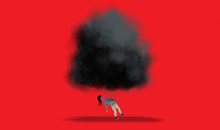
From the cradle to the office, life experiences in the decisions of bosses
2025-06-08 20:07:24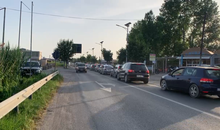
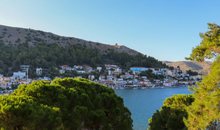
Greek seismologists concerned after earthquake on Mount Athos
2025-06-08 19:18:51
Why do olive oil bottles have to be dark in color?
2025-06-08 18:55:21
Serbian authorities detain a former member of the Kosovo Police Special Unit
2025-06-08 18:30:17


A quantity of pyrotechnic materials was found at the Polytechnic University.
2025-06-08 17:29:06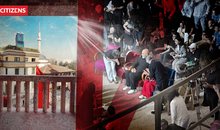
The tower that covers God with concrete
2025-06-08 17:00:43

Police take stock of May: 625 arrested and 415 thousand euros of assets seized
2025-06-08 16:15:37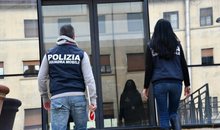
Italy/ 16-year-old Albanian stabbed, investigations reveal first clues
2025-06-08 15:57:54
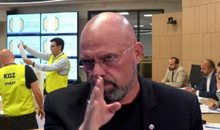

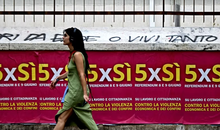
Citizenship referendum polarizes society in Italy
2025-06-08 14:38:51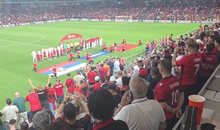



Foreign tourist gets stranded on the beach, police intervene
2025-06-08 13:04:56


Five people are arrested in Kapshtica, four of them border policemen
2025-06-08 11:46:41
The Serbian team leaves Tirana under strong security measures
2025-06-08 11:20:25
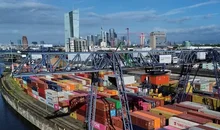
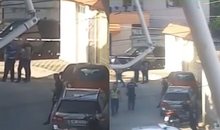
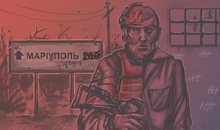

Trump-Musk clash risks sinking NASA, biggest cuts in its history
2025-06-08 09:41:34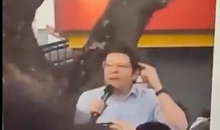
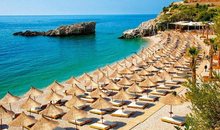



Temperature up to 38 degrees, weather for today
2025-06-08 08:21:33
Posta e mëngjesit/ Me 2 rreshta: Çfarë pati rëndësi dje në Shqipëri
2025-06-08 08:04:53
Albania-Serbia clash ends goalless, Manaj misses 'golden' chance
2025-06-07 22:42:40


Trump warns of 'consequences' if Musk funds political rivals
2025-06-07 21:29:11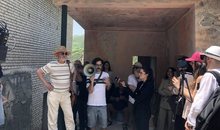
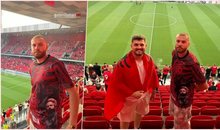
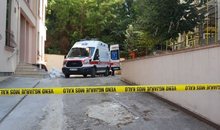
14-year-old falls from 6th floor of apartment in Tirana
2025-06-07 20:28:07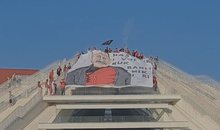
"Old enemies don't make new friends"
2025-06-07 19:52:58




HIV on the rise in Kosovo, 10 new cases recorded in five months
2025-06-07 17:47:59
Fire in the waste field in Vlora, Berisha: Monstrous crime against citizens
2025-06-07 17:27:40
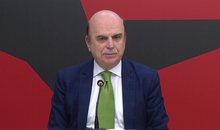
PL: The country's food safety system does not track food contamination
2025-06-07 16:40:37
Fire engulfs Vlora waste field again, mayor: Intentional
2025-06-07 16:20:06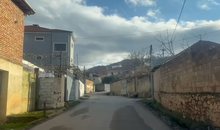
20-year-old man ends his life in Pogradec, police reveal details
2025-06-07 15:47:29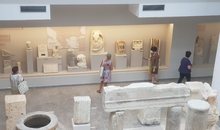
Tourism without heritage: Durrës opens the season with museums closed
2025-06-07 15:27:30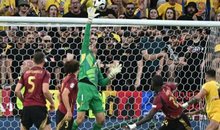

Gjendet një person i pajetë në Tiranë
2025-06-07 14:54:23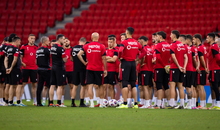
Detailed control, the rules that fans must follow in the Albania-Serbia match
2025-06-07 14:32:19
A heat wave will sweep across Albania next week
2025-06-07 14:10:18





AMP checks at Kapshtica customs, drug found hidden in a vehicle
2025-06-07 12:15:26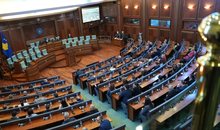
Kosovo Assembly fails to be constituted even after 28 attempts
2025-06-07 11:58:58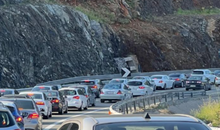


Oh Albania, you have no old age!
2025-06-07 11:05:01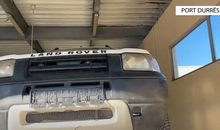


Mavraj's message to the Rossoneri: Kosovo is ours forever. Now play football
2025-06-07 10:10:52


Why are Ukrainians being accused of arson at Keir Starmer's properties?
2025-06-07 09:16:24
Foreign exchange, how much foreign currencies are sold and bought today
2025-06-07 09:04:55
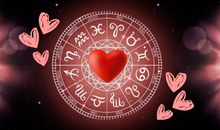
Horoscope, what do the stars have in store for you today?
2025-06-07 08:31:29
Weather forecast for Saturday, here's what the temperatures will be like
2025-06-07 08:17:35
Posta e mëngjesit/ Me 2 rreshta: Çfarë pati rëndësi dje në Shqipëri
2025-06-07 08:01:23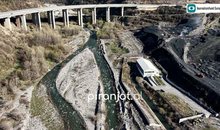
Heavy metals in the Drin River, causes of cancerous diseases
2025-06-06 22:54:02


Works in Spaç, Lubonja: Destruction of collective and historical memory
2025-06-06 21:54:32

DASH: Balkans, part of American strategy for expelling migrants
2025-06-06 21:12:33

Ilir Shqina, a diplomat, and her business partner Grida Dumas were suddenly born
2025-06-06 20:21:46
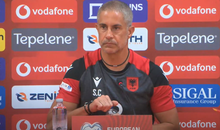

Couple injured in Kavaja, police find firearm hidden in wall
2025-06-06 19:05:19

EULEX mandate in Kosovo extended until 2027
2025-06-06 17:58:20
These are the 3 zodiac signs that will be favored in the next decade
2025-06-06 17:50:52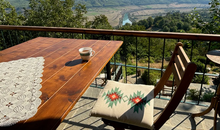
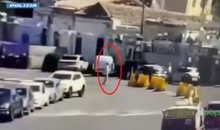

Anthropology
2025-06-06 17:06:00
